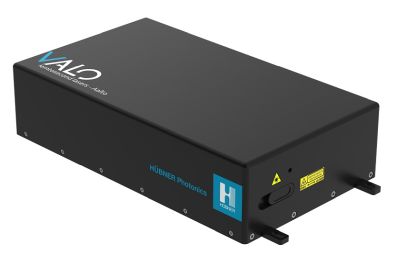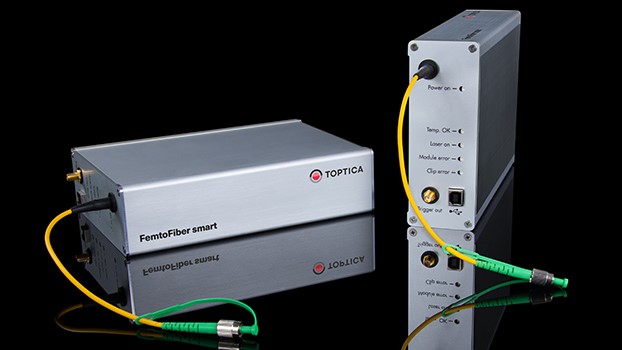seed lasers (original) (raw)
Definition: lasers which are used for generating some seed light into an amplifier or another laser
Categories:  laser devices and laser physics,
laser devices and laser physics,  optical amplifiers
optical amplifiers
- light sources
- lasers
* solid-state lasers
* diode-pumped lasers
* lamp-pumped lasers
* distributed feedback lasers
* dye lasers
* gas lasers
* free-electron lasers
* radiation-balanced lasers
* cryogenic lasers
* visible lasers
* eye-safe lasers
* infrared lasers
* ultraviolet lasers
* X-ray lasers
* upconversion lasers
* Raman lasers
* high-power lasers
* multi-line lasers
* narrow-linewidth lasers
* tunable lasers
* pulsed lasers
* ring lasers
* seed lasers
* ultrafast lasers
* industrial lasers
* scientific lasers
* alignment lasers
* medical lasers
* space-qualified lasers
* miniature lasers
* OEM laser modules
* lasers for material processing
* lasers for quantum photonics
* lasers for Raman spectroscopy
* (more topics)
- lasers
Related: optical amplifiersmaster oscillator power amplifierslave lasersingle-frequency operationsingle-frequency lasersinjection lockinginjection seeding
Opposite term: slave lasers
Page views in 12 months: 1742
DOI: 10.61835/fr7 Cite the article: BibTex BibLaTex plain textHTML Link to this page! LinkedIn
Content quality and neutrality are maintained according to our editorial policy.
📦 For purchasing seed lasers, use the RP Photonics Buyer's Guide — an expert-curated directory for finding all relevant suppliers, which also offers advanced purchasing assistance.
What is a Seed Laser?
A seed laser is a laser the output which is injected into some optical amplifier or another laser. This is done in, e.g., the following situations:
- A seed laser combined with an amplifier forms a master oscillator power amplifier configuration, used for generating an output with high power. Compared with an approach with a single high-power laser, it is easier to obtain certain features with a low-power seed laser, e.g. single-frequency operation with narrow linewidth, a wide wavelength tuning range or the generation of ultrashort pulses.
- Instead of injection into an amplifier, a single-frequency seed beam can be sent into another laser (slave laser) or into an optical parametric oscillator to achieve narrowband emission via injection seeding. It is sometimes possible even to achieve injection locking, where the emitted frequency exactly equals the seed frequency, and the laser noise may be close to that of the seed laser.
Typical types of seed lasers are small laser diodes (single-frequency or gain-switched), short-cavity fiber lasers, and miniature solid-state lasers such as nonplanar ring oscillators (NPROs).
Suppliers
Sponsored content: The RP Photonics Buyer's Guide contains 28 suppliers for seed lasers. Among them:
⚙ hardware
Single frequency fiber lasers exhibit reduced frequency noise, excellent stability and long coherence length due to their short cavity design.
MPBC has a line of short cavity single frequency lasers available at wavelengths ranging from 910 nm to 1300 nm. With an all-fiber optical cavity architecture and a mechanical package that is thermally and acoustically isolated, these lasers are known for their quality and robustness. Active stabilisation implementing Pound–Drever–Hall (PDH) locking is used to stabilise frequency. Wavelength tunability is achieved by temperature and piezo.
These seed lasers can be used in conjunction with MPBC's single frequency amplifiers to increase the output power while maintaining the critical seed parameters, such as narrow linewidth, reduced frequency noise and long coherence lengths.
⚙ hardware
Innolume’s seed laser diodes, operating in the 1015–1125 nm wavelength range, are specifically optimized for fiber laser seeding applications, offering the precision and stability required for high-performance amplification systems.
You can find options including Fabry–Pérot lasers for high-power seeding (up to 1000 mW peak, 400 mW CW) and Distributed Feedback lasers for ultra-short pulse generation down to 50 ps via gain switching.
These sources enable tailored seeding strategies for a wide range of fiber laser architectures.
⚙ hardware
Thorlabs manufactures an extensive selection of ultrafast lasers and related products for control and characterization. Applications from nonlinear excitation and amplifier seeding to THz and supercontinuum generation are served by a family of products covering a spectral range from 700 — 4500 nm. Our femtosecond laser offerings include fiber lasers, and our picosecond lasers include gain-switched and microchip lasers. Complementing these laser systems is a suite of ultrafast optics, including nonlinear crystals, chirped mirrors, low-GDD optics, and related products for pulse measurement, pre-compensation, and dispersion measurement.
⚙ hardware
Single-frequency microchip, NPRO and DFB diode CW lasers are available for seeding bulk amplifier chains or fiber amplifiers for generating high power laser radiation at 1030, 1047, 1053, 1064 and 1342 nm wavelengths. Another application is seeding of high-power single-frequency pulsed Q-switched lasers for holographic and interferometric applications.
Picosecond pulse diode lasers from ALPHALAS can be applied for seeding of fiber and regenerative amplifiers.
⚙ hardware
Serving North America, RPMC Lasers offers precision seed lasers with narrow linewidth and single longitudinal mode (SLM) for high spectral purity, customizable wavelengths, and powers to optimize amplification with reduced gain thresholds.
Flexible fiber-coupling includes single- and multimode options, stabilized and ruggedized for lab or field use, with adjustable pulse widths and rep rates for versatile seeding in stable, reliable setups.
Turnkey solutions deliver high-peak power and low jitter in compact, low-SWaP designs, featuring user-friendly controls and diagnostics for synchronized, high-performance applications.
Let RPMC help you find the right seed laser today!
⚙ hardware
The VALO Series of ultrafast fiber lasers offers a range of high-performance features suitable for advanced applications in multiphoton imaging, spectroscopy, and more. These compact, turn-key lasers deliver some of the shortest pulse durations and highest peak powers available in fiber laser technology.
Key Specifications:
- Pulse duration: <40 fs
- Output power: up to 2 W
- Noise level: very low
- Features an integrated pre-compensation dispersion module for optimal peak power delivery
Ideal as seed lasers for various amplifier systems, the VALO Series utilizes innovative fiber laser technology to achieve ultrashort pulse durations. This capability, combined with computer-controlled group velocity dispersion pre-compensation, ensures precise peak power delivery exactly where needed.
For more details on how the VALO Series can enhance your application, visit our product page.
⚙ hardware
TOPTICA’s ultrafast fiber lasers family “FemtoFiber smart” is available as picosecond or femtosecond version. The lasers are based either on ytterbium-doped or erbium-doped fiber laser architecture. These systems are dedicated to applications ranging from seed laser purposes, biophotonics to terahertz generation and two-photon polymerization.
⚙ hardware
Menlo Systems' femtosecond fiber lasers based on Menlo figure 9® patented laser technology are unique in regard to user-friendliness and robustness. We offer solutions for scientific research as well as laser models engineered for OEM integration.
Questions and Comments from Users
Here you can submit questions and comments. As far as they get accepted by the author, they will appear above this paragraph together with the author’s answer. The author will decide on acceptance based on certain criteria. Essentially, the issue must be of sufficiently broad interest.
Please do not enter personal data here. (See also our privacy declaration.) If you wish to receive personal feedback or consultancy from the author, please contact him, e.g. via e-mail.
By submitting the information, you give your consent to the potential publication of your inputs on our website according to our rules. (If you later retract your consent, we will delete those inputs.) As your inputs are first reviewed by the author, they may be published with some delay.














